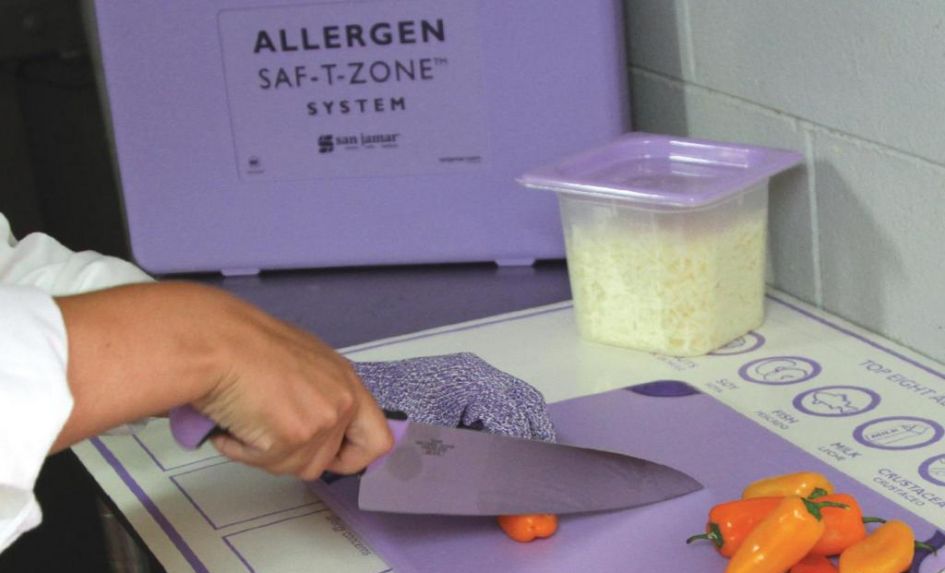“No, you’re not ‘allergic to maths’. You’re just being bone idle.”
My old maths teacher was right. I was indeed being lazy, despite my best efforts to claim ‘mathematical hypersensitivity’. Teachers naturally continue to encounter similar comments in the course of educating the next generation, but allergies have, in fact, become something of a media-fuelled trending topic.
Allergy awareness has been increasingly discussed over the last five years or so, but became a national talking point in wake of two widely reported allergy-related deaths in late 2018.
The catering and hospitality industry has subsequently seen an influx of meal preparation products aimed at combating cross contamination and promoting allergen safety.
With allergy rates among children on the rise – between 6% and 8% of children are currently thought to be affected by food allergies – it’s vital that schools have in place the protocols and equipment they need to prevent allergic reactions, which can range from mild irritation to full anaphylactic shock.
Given that schools are required to provide safe, sheltered environments for pupils to learn in, headteachers and kitchen staff alike must ensure that foods which may aggravate documented allergies are mitigated, or that alternatives are prepared separately with care.
What other options are available for promoting an allergen-free catering environment, and what further measures can schools take to prevent allergy reactions? At Alliance Online, we believe the following three areas are key to ensuring child safety:
Separation
Use of storage containers is widely considered best practice for preventing food contamination prior to cooking. Utilising gastronorms and other receptacles is the best way of isolating foods, and known allergy triggers in particular.
Implement an easy-to-follow, colour coding sticker system, so that kitchen staff have a quick visual indicator as to the contents of various storage devices.
Failure to prepare
Food with the potential to induce allergies should ideally be prepared with equipment specifically designated for that purpose.
Said items shouldn’t be nominated and set aside each day but be permanently reserved for that use only, since washed apparatus can still contain trace amounts of food particles. Products such as the ‘Allergen Saf-T-Zone’ chopping board set are perfectly suited to such environments and situations.
Now, we’re cooking
Finally, schools and kitchen staff need to consider cookware. To guarantee meals that are safe for all, it’s sensible to purchase and use specific allergen-free cookware.
Our allergen cookware from Pujadas adheres to a universal purple colour code, so that employees can immediately identify that these are for cooking allergen-free meals.
Having separate saucepans and stockpots to hand will both minimise the chances of cross-contamination and help reassure parents that the school’s main priority is their children’s safety.
Mike Hardman is marketing manager at Alliance Online.










